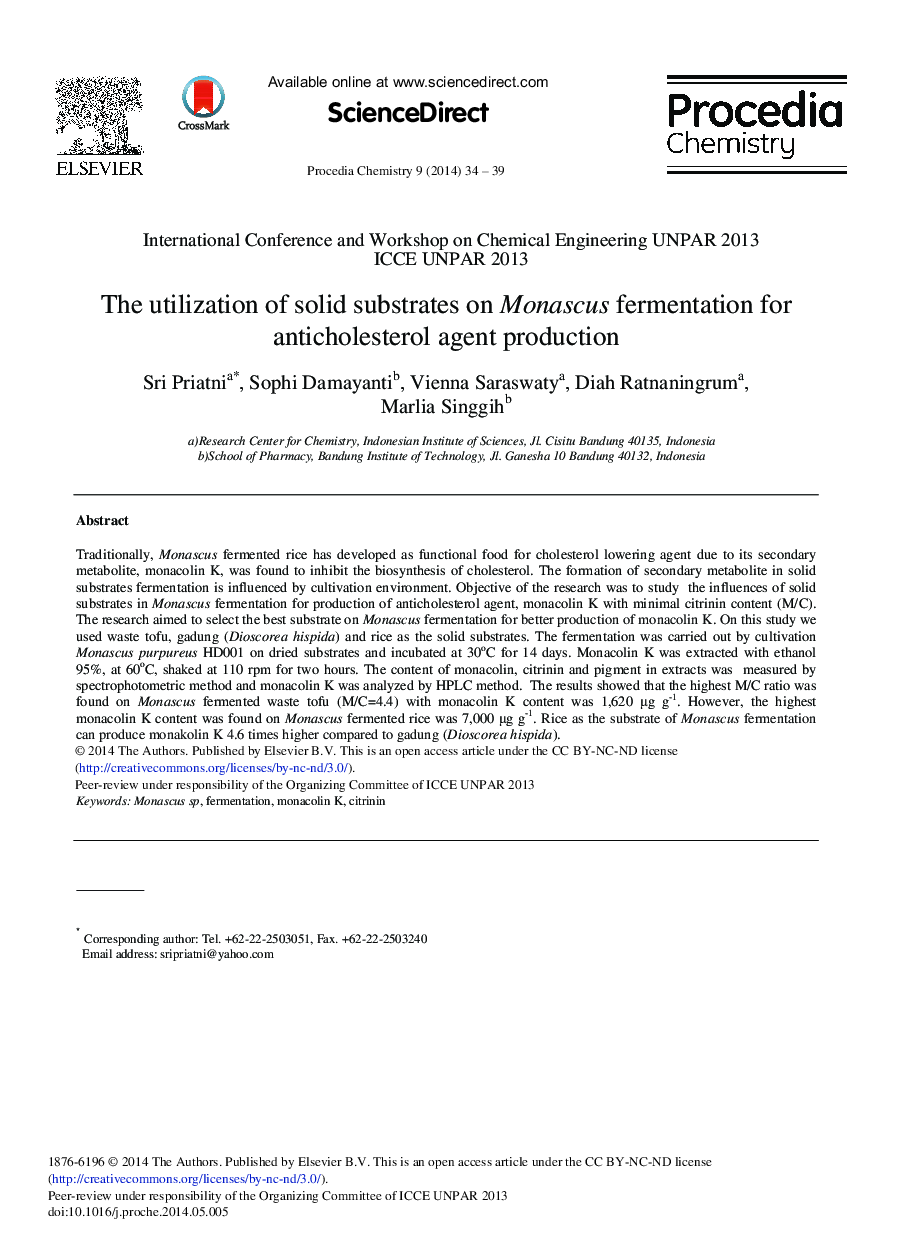| Article ID | Journal | Published Year | Pages | File Type |
|---|---|---|---|---|
| 240013 | Procedia Chemistry | 2014 | 6 Pages |
Traditionally, Monascus fermented rice has developed as functional food for cholesterol lowering agent due to its secondary metabolite, monacolin K, was found to inhibit the biosynthesis of cholesterol. The formation of secondary metabolite in solid substrates fermentation is influenced by cultivation environment. Objective of the research was to study the influences of solid substrates in Monascus fermentation for production of anticholesterol agent, monacolin K with minimal citrinin content (M/C). The research aimed to select the best substrate on Monascus fermentation for better production of monacolin K. On this study we used waste tofu, gadung (Dioscorea hispida) and rice as the solid substrates. The fermentation was carried out by cultivation Monascus purpureus HD001 on dried substrates and incubated at 30oC for 14 days. Monacolin K was extracted with ethanol 95%, at 60oC, shaked at 110 rpm for two hours. The content of monacolin, citrinin and pigment in extracts was measured by spectrophotometric method and monacolin K was analyzed by HPLC method. The results showed that the highest M/C ratio was found on Monascus fermented waste tofu (M/C=4.4) with monacolin K content was 1,620 μg g-1. However, the highest monacolin K content was found on Monascus fermented rice was 7,000 μg g-1. Rice as the substrate of Monascus fermentation can produce monakolin K 4.6 times higher compared to gadung (Dioscorea hispida).
